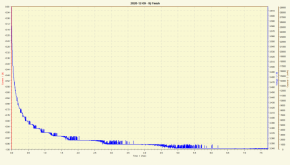jvbutter01
New Member
- Joined
- Aug 20, 2020
- Messages
- 208
Have new cells purchased in forum group buy, watching some of the vids out there about top balancing. I will lay them all in parallel, get the voltages the same. Some I had to hook up the mini cell tester @Will Prowse recommends in one of his vid to get the cell back so its matched to the others...
#1@ 3.35
#2@ 3.33
#3@ 3.35
#4@ 3.34
when I hook them back up in series 4s config, and put the charger, the 1 positive and now 1&2 pos climb up above #3&4 cells
#1@ 3.82
#2@ 3.37
#3@ 3.37
#4@ 4.16
I put the cell tester back on the cells and got them down to same voltage
#1@ 3.35
#2 @3.33
#3@ 3.35
#4@ 3.34
I broke down the pack and swapped the #1 &2 cell and #3&4 cell in the position in the back. now put back on charger starts out 42a charging, within 20 min shuts off ( they are probably high SOC) and I check the voltages and we have
#1@ 3.9
#2 @3.33
#3@ 3.45
#4@ 3.35
seems where ever I move this cell it keeps charging up to 3.9x. Is there anything to do about this? I cant get the pack to charge up to 3.65 as i have read about.
thx
#1@ 3.35
#2@ 3.33
#3@ 3.35
#4@ 3.34
when I hook them back up in series 4s config, and put the charger, the 1 positive and now 1&2 pos climb up above #3&4 cells
#1@ 3.82
#2@ 3.37
#3@ 3.37
#4@ 4.16
I put the cell tester back on the cells and got them down to same voltage
#1@ 3.35
#2 @3.33
#3@ 3.35
#4@ 3.34
I broke down the pack and swapped the #1 &2 cell and #3&4 cell in the position in the back. now put back on charger starts out 42a charging, within 20 min shuts off ( they are probably high SOC) and I check the voltages and we have
#1@ 3.9
#2 @3.33
#3@ 3.45
#4@ 3.35
seems where ever I move this cell it keeps charging up to 3.9x. Is there anything to do about this? I cant get the pack to charge up to 3.65 as i have read about.
thx
Last edited:



